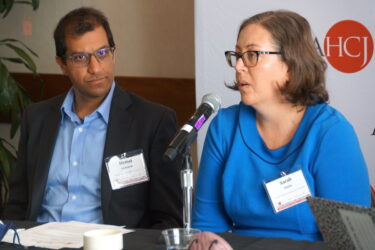
Across the U.S., tooth decay remains widespread. Poor and minority Americans continue to be disproportionately burdened by disease. But in recent years, some progress has been made in addressing oral health disparities and reaching vulnerable children with needed dental services, federal data show.
According to newly released findings from the 2011-16 National Health and Nutrition Examination Survey (NHANES):
- Overall, 23% of Americans aged 2-5 years old have tooth decay — down from 28% rate in the 1999-2004 survey. While decay rates declined across all races, minority children continue to suffer more disease. Approximately 18% of white preschoolers have caries compared with 28% of black and nearly 33% of Mexican American 2-5 year olds.
- While decay rates fell across income groups, the disease remains most prevalent among low-income children. More than one-third (34%) of poor 2-5 year olds have decay compared with 16% of their non-poor peers, according to the report, issued this month.
- More young children have received treatment for tooth decay. Overall, about 10% of 2-5 year olds have untreated decay, down from 20.5% in the previous study. The most significant declines in untreated disease rates occurred among young Mexican-American, poor and near-poor children, federal researchers found.
- Among older U.S. children, access to preventive dental sealants has increased. Overall, nearly half (48%) of adolescents have sealants on permanent teeth according to data collected for the 2011–16 NHANES, up from 38% in the 1999-2004 survey. Hispanic and near-poor adolescents aged 12-19 showed the largest gains in obtaining sealants.
Still, well over half (57%) of adolescents have tooth decay, a rate that has not significantly changed since the 1999-2004 report. Minority and poor adolescents continue to experience disease at higher rates than their white and more affluent peers. - Ninety percent of working-age adults have tooth decay, a slight decline from the 92% reflected in the last report. Overall, more than one-quarter (26%) of Americans aged 20-64 continue to have untreated tooth decay, with untreated decay rates far higher among some groups.
“During 2011-2016, the prevalence of untreated decay was almost 40% to 50% among adults who were non-Hispanic black, Mexican American, or poor or near-poor combined; who had a high school education or lower; and who were current smokers,” the report found.
“Prevalence among these groups was about twice that of adults who were non-Hispanic white or not-poor, who had more than a high school education, and who never smoked.” - A full 96% of adults aged 65 or older have tooth decay. Overall, untreated decay stands at 16%, with rates about twice as high for poor and minority elders and for those who smoke.
- Seventeen% of adults aged 65 or older have lost all their teeth, a rate that reflects a 10% decrease from the 1999-2004 report. Except for among black elders and smokers, the rate of edentulism dropped across all sociodemographic groups.
- The expansion of access to public dental benefits and services during recent years could help explain the progress in getting more restorative and preventive care to children, according to the report’s authors.
“Improvements in children’s oral health status likely reflect increased access to preventive and restorative care. State Medicaid and Children’s Health Insurance Programs are major drivers of the use of dental services among poor and near-poor children and adolescents. A near-doubling of the percentage of children with public dental insurance from 1996 to 2015 resulted in a 15 percentage point increase to 88% in any dental coverage among all children,” the authors observed.
Still, since 2016, the last year included in the survey, public insurance rates for children have declined. Oral health advocates have been among those raising concerns about the trend and its potential impact upon the progress made in addressing the oral and overall health needs of vulnerable children.
Federal Medicaid/CHIP data released earlier this year indicated that the number of children enrolled in those programs nationwide fell by more than 800,000 in 2018, according to an analysis by the Georgetown University Health Policy Institute.
The Trump administration has attributed the falling numbers to improvements in the economy. However, as Harris Meyer for Modern Healthcare reported, many Medicaid experts attributed the declines “to onerous state eligibility redetermination processes and cuts in funding for enrollment education and outreach” imposed by the administration.
“They also say families of mixed immigration status are increasingly afraid to sign themselves and their children up for coverage because of the Trump administrations’ crackdown on immigration and its proposed rule to penalize legal immigrants for using public benefits,” Meyer wrote.
On Sept. 10, a coalition of health organizations including the American Academy of Pediatrics, the Children’s Defense Fund and the Children’s Dental Health Project issued a warning about the erosion of coverage.
“After years of progress improving children’s health and dental coverage, we are losing ground, and children are suffering the consequence. Nearly one-third of America’s children rely on Medicaid and CHIP for comprehensive, affordable coverage, including children in foster care, children who live in or near poverty, and children with disabilities or special health care needs. These are the children who need coverage the most. For these kids, no coverage often means no care,” the groups noted in a statement.







